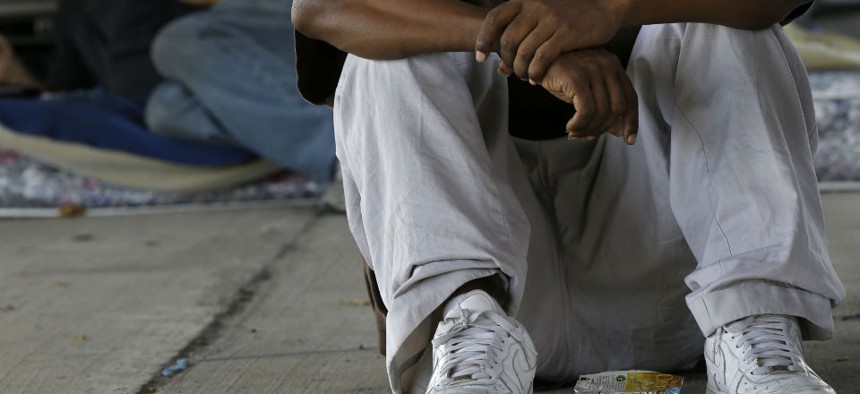Watchdog: Congress Should Help HUD Improve List of Buildings for Homeless
Inventory of agency properties that could become shelters called too broad.
The Housing and Urban Development Department, which is under twin pressures to identify federal properties that might serve the homeless as well as sell off underutilized government property, is producing inventories that lack precision, the Government Accountability Office found.
HUD’s Federal Register descriptions of properties around the country that might make suitable homeless shelters are often duplicative, imprecise and “not user-friendly” to organizations working in the field, GAO said in a report released Thursday.
Under Title V of the 1987 McKinney-Vento Homeless Assistance Act, HUD and other agencies are tasked with identifying unused federal real estate and making some of it available to homeless assistance providers.
But GAO’s analysis and interviews with nonprofit groups found that few of the properties that HUD listed as suitable and available since the program began in 1987 received applications from homeless assistance providers. “In most cases, the properties may not have actually been practical for homeless service providers to use,” GAO wrote.
Under the program, 122 properties have been transferred from agencies to emergency shelters, transitional housing and referral services for the homeless, 81 of which are currently still in use. That’s out of 40,000 evaluated over three decades, of which 10,000 were deemed suitable by HUD, GAO reported. In its inventories, HUD by law includes many properties—80 percent of its listings in 2013, for example—that would require an interested shelter provider to move the structure to a new location.
“HUD officials told us that they would prefer that agencies not be required to report certain types of properties at all, such as those for off-site use only,” auditors wrote after conducting eight case studies. “The current statutory requirement for agencies to report all properties that fall within four broad categories—excess, surplus, underutilized, and unutilized—may not be effective for certain types of properties.”
The governmentwide effort to aid the homeless is coordinated by HUD and the Interagency Council on Homelessness. GAO interviewed their officials as well as those from nine other agencies.
Lawmakers and officials working on the programs in the past have questioned some of the reporting requirements as “burdensome to produce or not very useful,” GAO noted in its report addressed to Sen. Tom Carper, D-Del., chairman of the Homeland Security and Governmental Affairs Committee, and Ranking Member Sen. Tom Coburn, R-Okla.
The report recommended that Congress relieve HUD of some requirements and allow the agency to focus on the properties most promising as future homeless shelters. And it recommended that HUD modernize its electronic databases to improve transparency, and that all participating agencies improve coordination. The agencies, on review the draft report, agreed.




